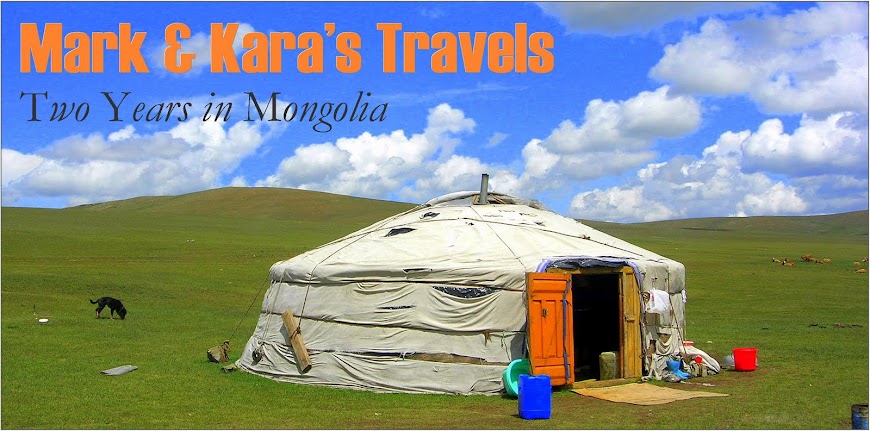by Mark
Let's begin with the people involved in this day I just had. First, Jeton Starova (a Manager of the Economic Develop Programs from Mercy Corps UB) was coming to town to meet with our office staff. He did not have a translator with him. A little background on Jeton: he's from the Republic of Macedonia (of the former Soviet Union), speaks Russian and English, and as I found out today actually worked for Land O' Lakes (yes, the butter company!) for about 10 years.
Anyway, when he got to the office he informed us that he'd invited a couple of gentlemen to join us in a meeting this morning. About 10 minutes later in walk two French men and a Mongolian woman who was their translator. These men were part of a group that was interested in exporting Free Trade Yak Wool from Mongolia to Europe (particularly France), and wanted to beat the rush of Chinese product that would surely flood the continent in years to come. They were in town to meet with yak wool product producers to chat about the possibilities of a collaboration.
Long story short, I call my translator to see if she'll join us on a little excursion to the nearby soum Ix Tamir to meet with the yak wool cooperative. I looked around and realized that our entourage consisted of 2 Mongolian men (both drivers), 2 Mongolian women (both translators - one Mongolian to English and one Mongolian to French), 2 French men (one speaks English), Jeton (who speaks Russian and English), and myself (the only native English speaker). I've attached a video of the different people in our group...it's a mix of a couple snapshots from the yak wool/cashmere garment manufacturer. We spent about an hour speaking with them, watching as they produced the clothing on machines that are all hand operated.
The reason I even bring up this event was simply to write down my amazement at the spoken language dexterity it required for all parties involved. Jeton would ask questions in English, my translator would talk to the Mongolian management, then she would tell us in English his response while the French men's translator would tell them in French. Then while Jeton and I would speak in English, the Mongolians would converse in Mongolian, while French was being spoken right behind me.
I was amazed at it all. I was proud to be apart of something so "global" and yet so "backyard". I couldn't help but look around and think to myself that it takes a team of people, from all over the world, with a heart to help or even a paycheck in mind, to come together in the middle of Mongolia to attempt to help a small group of yak wool artisans. Whether yak wool exports become the next big thing for Mongolia is not what was important today - rather the orchestra of languages. It was a good day.









